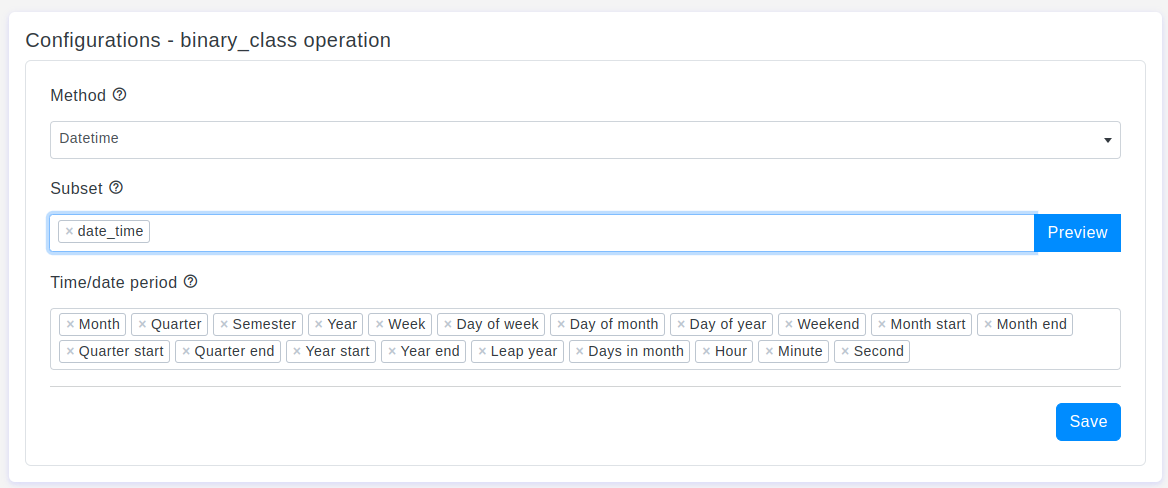
Introduction
Extracting specific components from datetime data can be crucial for various analyses and feature engineering in machine learning models. OtasML, a visual machine learning tool, offers a comprehensive DateTime feature within its data preparation model. This tool allows users to extract various components such as month, year, day, hour, and more from datetime columns, creating new columns for each extracted component. This article explores how to configure the DateTime feature to enhance your data preprocessing workflow.
Configurations
The DateTime tool in OtasML provides flexible options for extracting specific components from datetime data, enabling users to create new columns with precise time-related information. Below are the key configurations and options available:
Subset
- Default Value: None
- Description: This option allows users to select specific columns for converting to datetime. By specifying the subset of columns, users can ensure that only the desired datetime columns are transformed, providing more control over the preprocessing step.
Time/Date Period
- Default Value: None
- Description: Extract the components related to the time period from the DateTime object. These components indicate the precise date and time attributes of the event. The available options for extraction include:
MonthQuarterSemesterYearWeekDay of weekDay of monthDay of yearWeekendMonth startMonth endQuarter startQuarter endYear startYear endLeap yearDays in monthHourMinutesSecond
Interactive Buttons: Preview and Save
To enhance user experience and provide greater control over the datetime extraction process, the tool includes two essential buttons:
Preview:This button allows users to see the effects of the datetime extraction configuration in real-time without permanently applying the changes. By clicking Preview, users can visually assess how the dataset will be transformed based on the current configurations, ensuring that the extraction method is appropriate before committing to any changes.Save:Once users are satisfied with their configurations and the preview results, they can click the Save button to permanently apply their chosen settings. This action saves the configuration, which will then be applied to the data during the training process, ensuring that the datetime extraction aligns with the user's expectations and requirements.
Conclusion
The DateTime tool in OtasML provides a robust solution for extracting specific components from datetime data, creating new columns with precise time-related information. By offering a wide range of extraction options and the ability to selectively apply these transformations to specific columns, the tool provides greater flexibility and control over the data preprocessing step. The inclusion of interactive Preview and Save buttons further enhances the user experience, ensuring confidence in the datetime extraction process. OtasML continues to empower users with intuitive and effective tools, making data preparation a seamless and integral part of the machine learning workflow.
